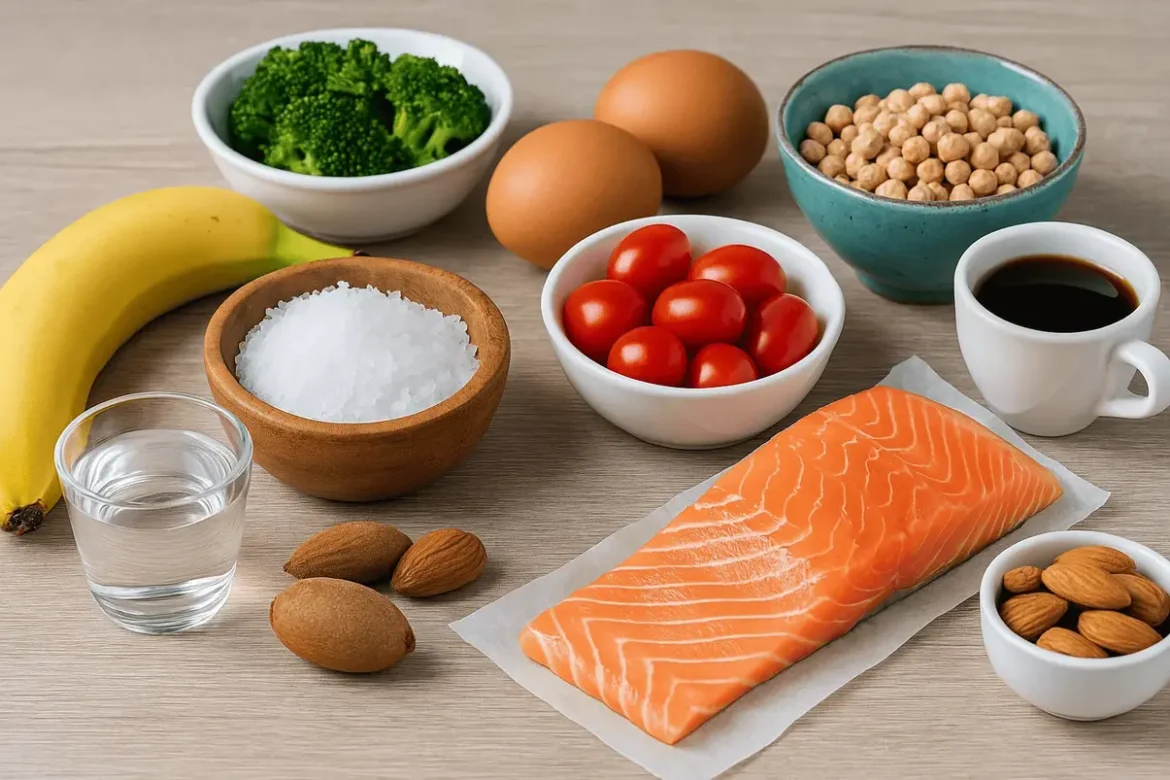“You Are What You Eat”, heard about this before? It is absolutely true. The food you eat can make you healthy or unhealthy. In individuals with high or low blood pressure, nutrition plays a very important role.
Researchers have mentioned that the diet you follow can impact your blood pressure both positively and negatively. Therefore, it is important to keep an eye on what to eat.
Understanding Blood Pressure
The force that your blood exerts on the blood vessel walls as it flows through the arteries is called blood pressure. It is measured in millimeters of mercury (mm Hg). The normal blood pressure range is typically between 90/60 and 120/80 millimeters of mercury (mm Hg), but numbers outside this range can still be considered normal.
The top or the first number in your blood pressure reading is the systolic blood pressure which indicates the pressure in your arteries when the heart beats and the bottom or the second number is the diastolic blood pressure which indicates the pressure in your arteries when your heart is at rest.
What is Low Blood Pressure or Hypotension?
Low blood pressure or hypotension is defined as any blood pressure that consistently falls below normal levels.
A blood pressure reading where the systolic reading is below 90 mm Hg and the diastolic reading is below 60 mm Hg is considered low blood pressure.
Normally when your heart pumps blood, it flows through the arteries at a certain force (blood pressure). In an individual with low blood pressure, this force or pressure will be lower than normal.
What Causes Low Blood Pressure?
Low blood pressure or hypotension can be temporary or long-lasting. It can result from an underlying condition such as heart diseases, endocrine disorders, pregnancy, severe infection or septicemia, blood loss, dehydration, or deficiency of essential nutrients.
The usage of certain medications such as blood pressure medications, antidepressants, drugs for Parkinson’s disease, and erectile dysfunction can also cause low blood pressure.
What are the Common Symptoms of Low Blood Pressure?
Common symptoms of low blood pressure include dizziness or lightheadedness, blurred vision, fatigue, nausea, and lack of concentration. These symptoms can affect your everyday activities and hamper the quality of your life.
Therefore if you are experiencing one or more of these symptoms it is necessary to take action and adopt some measures to manage your blood pressure.
Making minor changes to your diet is one of the most effective and easy ways to raise your blood pressure. Including certain foods in your diet can help in maintaining your blood pressure within a healthy range.
What are the Best Foods for Low Blood Pressure?
A low blood pressure diet should include nutrient-rich foods that help stabilize your levels, boost energy naturally, and support your body’s needs daily. Think wholesome options to keep hypotension in check!
1. Salty Food
Salt plays an important role in controlling your body’s water balance. Salt retains water and increases your blood volume leading to increased blood pressure. Therefore consuming more salt can help in elevating your blood pressure.
2. Foods High in Vitamin B12
Consume foods that are rich in Vitamin B12 such as eggs, meat, fish, and dairy products (milk and cheese). These can help in increasing your blood pressure.
3. Foods High in Folate
A deficiency in folate can result in low blood pressure. Therefore, you can try to include folate-rich foods in your diet such as green leafy vegetables, broccoli, citrus fruits, beets, legumes, seafood, nuts, and grains.
4. Caffeine
Caffeine is a stimulant and helps in raising your heart rate and your blood pressure. However, it can only temporarily spike your blood pressure and it cannot be a permanent fix. Other foods that contain caffeine include chocolate, tea, cocoa, and a few aerated drinks.
5. Adequate Fluids
Dehydration or not drinking enough fluids can cause a drop in your blood pressure. Therefore it is necessary to stay hydrated by consuming enough fluids.
What are the Foods to Avoid in Case of Hypotension or Low Blood Pressure?
Dealing with hypotension or low blood pressure? Some foods can make it worse. Cutting back on these may help you feel better. Pair this with a balanced diet and healthy habits for the best results. Here’s what to avoid:
- High-Carb Foods: Skip bread, potatoes, pasta, and candies – they can drop your pressure fast.
- Alcohol: Limit booze; it dehydrates you and lowers blood pressure even more.
- Sugary Snacks: Avoid sweets like cakes or sodas – quick sugar spikes can mess with your levels.
Key Takeways
- Blood pressure is the force that the blood exerts on the blood vessel walls as it flows through the arteries. It is measured in millimeters of mercury (mmHg).
- A blood pressure reading where the systolic reading is below 90 mm Hg and the diastolic reading is below 60 mm Hg is considered low blood pressure.
- Include foods that are high in salt, Vitamin B12, and folates. Having adequate fluids and caffeine also helps in elevating your blood pressure.
- Avoid foods that are high in carbohydrates like bread, potato, candies, pasta, etc., if you have low blood pressure.
